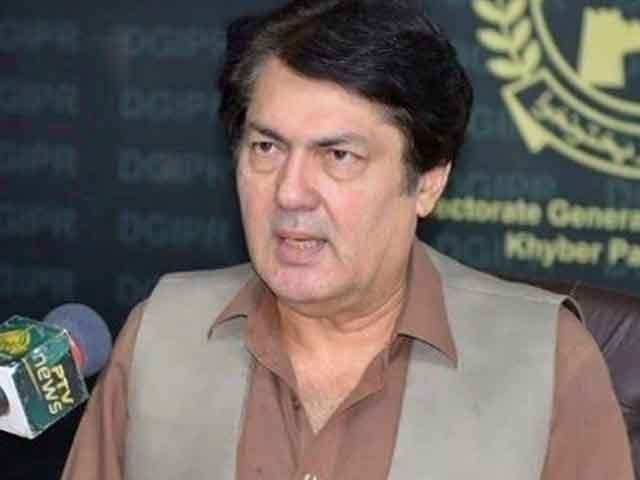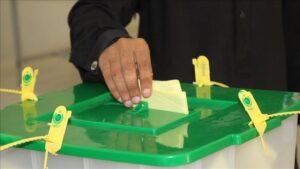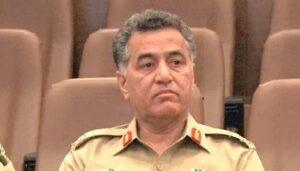Lawyer Dr. Muhammad Ali Saif
In the shadows of an increasingly autocratic political landscape, the people of Pakistan are witnessing a dangerous paradox. A political party that is silenced in the traditional media, demonized relentlessly, legally persecuted and institutionally cornered is still standing and perhaps even stronger than ever in the hearts and minds of the Pakistani. That game is Pakistan Tehreek-E-Insaf (PTI). The more it goes, the more it grows. The more he censors, the stronger his voice resonates in every corner of this country and even abroad. And the question that is being put under the skin of the political mafia and disturbing their sponsors is why do people do not release PTI?
In the last two years, the scale and intensity of repression against PTI have even exceeded the darkest chapters of our political history. From midnight raids and forced disappearances to mass disqualifications, dropouts of parties under coercion, media blackouts, acceleration of social networks and dozens of politically modified courts, the message has been strong and of course, this party must be erased at all costs. However, the public response has also been resolved, not without a fight, not without our vote.
If we examine this unique phenomenon of PTI’s political resilience of a sober and analytical lens, it is clear that it cannot convince people to begin to love the leaders that they themselves rejected. In any functional democracy, the media play the role of a mirror. In Pakistan, that mirror has been shattered. In a desperate attempt to Marginar PTI after demolishing his elected government, a campaign to erase PTI and Imran Khan began. Conventional television networks received instructions to erase the name of Imran Khan, blur their image or pretend that it does not exist. The anchors were removed from the air, the silenced columnists and the editors convened for “guidance”. The campaign continues to be viscous and ruthless with every day that passes.
Communication experts believe that propaganda is as effective as the public’s disposition to believe in it. People listen to what they want to hear. This has been the first defect in the State’s strategy, that is, it cannot convince a population to hate the same leader who themselves chose, defended and trust especially when the alternative is plagued by incompetence and corruption. After the expulsion of Imran Khan of the Government, it was replaced by an alliance of almost 12 opposition parties. As inflation shot, governance collapsed and the public lost hope in the alliance, the custom media narrative began to collapse under its own weight. Instead of pushing PTI, censorship transformed the party into a resistance symbol.
Another key variable that was drastically underestimated was the Internet. The architects of this repression did not anticipate the increase in digital resistance. When a screen darkened, thousands of phones illuminated. YouTube, Tiktok, X (Twitter) and Instagram became the new battlefields and people appeared in large quantities. There are no great studies, without funds, without instructions, only young men and women, volunteers at home, students, Pakistani abroad, everyone adds their voice. Everyone telling the truth. Everyone refuses to accept silence.
Despite the attempts to strangle internet and arrest online activists, this digital resistance is still alive. And through him, PTI remained connected to people instantly, honestly and unilruled.
Perhaps the most misunderstood aspect of PTI’s resilience is that their supporters do not see it simply as a political party. They see it as a moral cause. In his opinion, this is not a struggle for power, it is a struggle for dignity, justice and national independence.
Imran Khan’s political narrative, whether he agrees or not, is the voice of many Pakistani. The narrative that the Pakistani citizen is not a subject of dynastic or dictated foreign families, but a part interested in the future of this nation. This idea struck especially in youth, middle class and professionals. These segments were historically disconnected from politics, but now they are completely activated.
This moral dimension, that is, the belief that PTI is defending the truth against tyranny, is what makes it unwavering, even in the face of brutal repression. Purge, inquisitions, arrests, prohibitions and smear campaigns only validate their belief that the system is corrupt, and the fight is fair.
Nowhere is this political loyalty more visible than in Khyber Pakhtunkhwa, where PTI has ruled with consistency and transparency for more than a decade. Khyber Pakhtunkhwa’s political relationship with PTI is trusted. Even in the face of federal negligence, financial strangulation and security threats, Khyber Pakhtunkhwa under PTI demonstrated better services, cleaner administration, stronger anti -corruption measures and more receptive leadership. In tribal districts, the FM radio network, public dissemination programs and development efforts created a confidence link with the communities that the State had long ignored.
When the people of Khyber Pakhtunkhwa re -elected PTI with a landslide in the provincial elections of 2024, despite all the probabilities and with zero support of the establishment, it was a message for the rest of Pakistan, “it is not about propaganda. We have seen results. We have lived under their government. And we chose PTI again.”
Authoritarian strategies often fail not because they are weak, but because they are blind to human psychology. When the State resorts to visible injustice, that is, parading to handcuffed leaders, dragging women into court, slapping terrorism charges for tweets, you can silence some, but radicalize others.
The repression after day 9 can only deepen the division between the ruler and ruled. Instead of crushing PTI, he gave birth to questions that radicalized people’s thinking and gave rise to a basic question: is this an offensive against criminals or a punishment for challenging the status quo? The answer for most Pakistani has become crystalline. Attempts to mark a whole political party as Anti-Pakistan have failed. He has revealed interests in control instead of constitutionality.
Currently, Pakistan is in a critical situation. The institutions that were destined to protect democracy are being used to manipulate it. The courts are fighting between consciousness and coercion. The media are injured. The economy is falling apart. And people’s voice is suffocating.
But in this darkness, the continuous popularity of PTI is not just a reality, it is a lighthouse of hope. It shows that Pakistani are not ignorant or indifferent. That despite censorship, economic pain, disappointment and inquisitions, they are paying attention and remember the economic performance of Imran Khan. Remember the dignity of a leader who rejected the NRO, who returned the IMF money with Honor, who spoke for national sovereignty on global platforms. And most importantly, remember how betrayal is seen and who orchestrated it.
What PTI represents today is more than a party. It is an idea whose moment has come and ideas do not fade with television prohibitions or judicial cases. You can jail the leaders, you can confiscate properties, you can censor the speeches, but you cannot imprison an awareness that has already been awakened.




